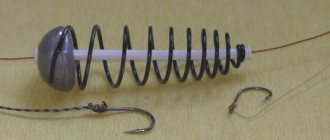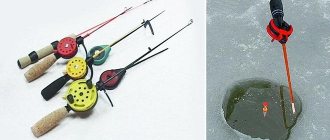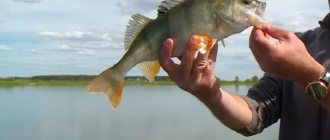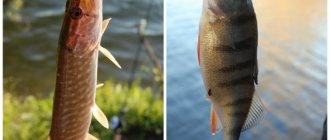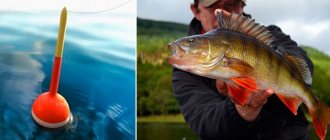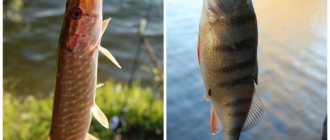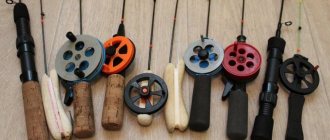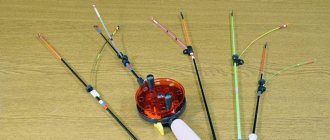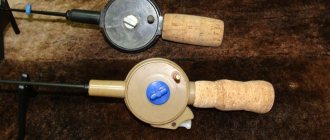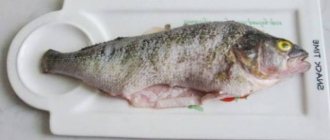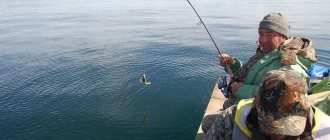Choosing and setting up a winter fishing rod for each subglacier is not just preparation for fishing, but a kind of ritual. At first glance, all these gears are similar. As we dive into the specifics of winter fishing, it becomes clear that the variety of ice fishing gear is no less than for summer fishing. In this article we will look at ice fishing rods, types, and design features. Let's look at the features of functionality and selection criteria, depending on the fishing conditions and fishing method.
How to choose a fishing rod
In market conditions, choosing a fishing rod for winter fishing is no less complicated than choosing a car or refrigerator. Manufacturers offer many options. Each author of a YouTube video claims that the gear they offer is the best. To choose the right winter tackle, you need to ignore the surrounding advertising and marketing, and pay attention to the fishing method and tactics for which the fishing rod is intended.
Any purchased model is just a blank. It can turn into the best fishing rod for a fisherman only in the hands of a person, after equipment and modification. In some fishing methods, the functions of the fishing rod are secondary - storing the fishing line and installing the gear on the ice. In others, they are critical, as in baited or reelless active fishing with jigs, lures.
Now information is available to everyone - the Internet is open. To choose a fishing rod, you need to determine the appropriate model in advance, in your head, as a result of studying the information. You should go to the store for a specific model and buy it.
Otherwise, unscrupulous experienced sellers may sell (“advise”) not what the fisherman needs, but what needs to be sold. Let's consider which fishing rod to choose for winter fishing, depending on the fishing method and conditions.
Techniques for fishing with winter lures or winter lures for perch
The trolling technique involves periodically swinging the fishing rod with pauses. First you need to lower the spoon into the hole to the very bottom. Then raise it to a height of about 5–10 cm above the bottom, this will become the starting point. This is followed by a swing of the fishing rod to a height of 15–30 cm, then the spoon is immediately lowered to its initial position and a pause is maintained for two to five seconds or more. Then swing again, etc.
The success of fishing largely depends on finding fish. Perch is a schooling fish; if you catch one in the same hole, you can catch it until the school moves away. But when you find perches, the main thing is not to hesitate. A school of perch does not stay in one place for a long time. After catching the next specimen, you need to remove it from the hook as quickly as possible and lower the spoon under the ice to the level where the trophy was caught. It should be noted that the striped predator has peaks of biting and periods of calm, regardless of whether it is the first/last ice or deep winter.
Tips for fisherman: How to catch perch in winter - Let's take it step by step
The size of the spoon is very important. It often happens when, when fishing with a fairly large spoon, a perch only sluggishly “knocks” on it, but does not dare to swallow it. In this case, replacing larger spinners with smaller ones, 2 cm long, helps. It is advisable not to use pike anti-bite leashes, swivels, or fasteners during periods of weak bite (also in the dead of winter). All this once again alarms the cautious fish. Even the excessive shine of the spinner can discourage the striped fish from eating.
Now we hold the bait on the bottom for a couple of seconds and then make a light swing with the rod. Usually a perch that has bitten goes after the spoon to pick it up from the bottom. And at the moment of the swing, the striped one is spotted on the outside in the area of the chin. If we had made the hook at the moment of the “poke”, then the perch most likely would not have been detected. He rarely gets caught when he is not in the mood to take the lure with his mouth. But the striped fish picks up the bait that has fallen to the bottom. Perhaps the perch’s instinct kicks in that the prey it has hit must be taken before it wakes up.
If things get really bad with the lure, they switch to jig fishing. Most likely, the perch needs a very small bait and at the moment it feeds exclusively on insects (for fishing with a jig, see the link at the very beginning of this article). After trolling, they immediately try to fish in the hole with a jig. That is, it turns out that we collect a school with the help of a spinner, and catch it with a jig. That’s why, in addition to a fishing rod for trolling, I also take jig tackle with me.
«>
Varieties
There are a lot of varieties and designs of fishing rods. Beginners often do not know what is intended for what. Experienced fishermen only need one glance at the display window to understand what lies in front of them. The main factor in the classification of all types of winter fishing rods is the fishing method, and, accordingly, the resulting “caliber” of gear. But further, within one type of fishing rod for winter fishing there are many similar models.
Here reliability, simplicity of design and functionality of the gear play an important role. It would seem that it could be simpler than a filly or a balalaika. For stationary fishing, in principle, any type is suitable. But for a balalaika jig you need a special one - light, with an elastic whip and a smooth reel motion. Our review of winter fishing rods is not a rating of expensive manufacturers, but a real classification of gear depending on the needs of the fisherman.
Fishing rods for trolling
Fishing rods for winter predator fishing with artificial baits (spinners, balancers, rattlins) are distinguished by a relatively large reel and a tulip or ring with a poke at the end of the whip. Such gear is somewhat coarser in caliber. Specialized lures are similar to spinning rods - they are equipped with a carbon whip with rings, a cork or neoprene handle and mounts for the reel.
Another variety is light fishing rods with foam reels, for trolling with small baits. Varieties of fishing rods for trolling in winter are a separate large class of gear. Read more in the article about winter fishing rods for trolling.
With handle and reel
A common and popular class is universal winter fishing rods with a reel and handle, and a whip without rings. This fishing rod can also be used for light trolling, but its main purpose is stationary fishing with a nod or float, as well as winter bottoms and weights for the current. The tackle is usually equipped with legs for stable installation on the ice near the hole.
Whips - fiberglass, vinyl or polycarbonate. The coil is built into the body and is adjusted with a tightening screw or key. For deep fishing, reels with a key are preferable - the required amount of fishing line is released faster. There are many manufacturers of such gear. In general, these winter fishing rods consist of the same components, but the details are different.
During practice on a pond, it turns out that some are more convenient, while others are worse. The personal preference of anglers is also of great importance here. On sale you can find various fishing rods of similar designs - large, small, with a solid handle or with a whip that slides into it. More on specific models below.
Balalaikas
Another popular type of fishing rod is the balalaika. These fishing rods do not have a handle - this significantly reduces the overall length of the tackle. The reel is built into the housing, which has a hole for the line to exit. However, balalaikas are less stable for stand-up installation. A hooked fish can drag the abandoned tackle into the hole.
Balalaikas are divided into fishing rods with a closed reel (the majority of these) and open ones, for example, US-3 Three Kita. In general, such tackle is smaller and lighter than a universal fishing rod. They are used both in stationary fishing (on legs) and for active play with a jig. There are no keys or special devices for adjusting the coil - this is done using a tightening screw.
Condor
Salmo Icerod
Herman-CR-IS5
US-1
US-2
Open balalaika US-3
Axleless balalaikas
Axleless winter fishing rods are even lighter due to the smaller volume of material used. The principle of operation is the same as in the balalaika - the design of the coil is somewhat different. Due to the void in the middle, the overall weight of the gear is reduced. These lightweight fishing rods are designed for bait fishing with a jig or without a reel. The most well-thought-out designs are equipped with “warm” cork sides for comfortable holding in the cold with bare fingers.
Axleless
Axleless with cork sides
Sports
It’s not for nothing that experienced fishermen consider special lightweight sports balalaikas to be the best fishing rods for winter active fishing. Such minimalist fishing rods are made of plastic or foam and have minimal size and weight, which is very important for creating the correct vibrations with the jig.
Such professional winter fishing rods are now available to all anglers. If earlier sports fishing rods were made individually or by hand, now they are also produced in series. For example, a sports winter fishing rod US 4 (Three Whales) costs about 50 rubles, and the original Yaroslavl balalaika Master Chabutkin costs 300 rubles. But essentially these products are the same.
At one time, Master winter fishing rods were popular with anglers due to their design, specially designed for jig fishing. Now, on its basis, industrial sports balalaikas are produced:
- US-4 Three whales;
- Chinese winter fishing rod HFB 22;
- The same sports balalaika from Rosy Dawn;
- Ivanovo balalaika MastIv, fishing rod Lisovka and a number of other products with a foam body.
If you search, you can find other good fishing rods for baited jigs or reelless ones. For example, the killer whale winter fishing rod from Crazy Brothers. All of these models are perfect for active jig play, immediately or after some modification.
Success Sports
Yaroslavl rewinder Chabutkina
Karismax Maxtreme 3
Grant Sports
US-4 Sports
With reels
Until now, some fishermen prefer to use gear of simple designs - with reels, without a reel. The winter fishing rod consists of a whip and a foam base, machined for storing fishing line. This is the simplest and most popular design. It is used both for passive fishing with a nod or float, and for active play with a jig. You don’t have to buy such a device – you can make it yourself, literally on your knees.
filly
Copyright and special
Among the winter fishing rods there are also real works of art of homemade fishermen. These are personalized designer gear, often intended for reelless fishing. Accordingly, prices for such products bite. Artuda fishing rods - price about 2000 rubles. Probably, such gear is suitable specifically for connoisseurs of the ethical side of winter fishing.
In terms of functionality, cheap sports balalaikas, after some modification, are in no way inferior, and in some cases even superior to elite designer works. The main thing in ice fishing, however, is not the “golden” tackle, but the tactics, equipment and skills of the fisherman. Such products will be useful as gift fishing rods or for fierce professional athletes (most of whom are more inclined to use a set of lightweight sports balalaikas or washers).
- Artuda fishing rods;
- Fishing rod Kovalevka;
- Equipped Bykovka;
- Kuznetsov's fishing rod;
- Ice fishing rod made of wood by A. Slynko.
Of course, this list is not complete - if you scour the Internet, you will find plenty of similar options. We have provided only the most famous ones today.
Artuda Classic
Kuznetsovka
Kovalevka
Bezmotylka Bykova-3 (equipped)
Ultralight washers and plugs
The lightest fishing rods for hookless, reelless fishing are homemade plugs or Shcherbakov’s winter fishing rods. The reel is made from a champagne or wine cork, as well as washers (shcherbakovka) machined from the inside from hard foam. The ancestor of this class of fishing rods was the famous Shcherbakov washer.
The weight of such gear is only a few grams. The relatively long carbon whip allows you to feel bites in your hand. However, those who like to use nods are also not limited in their actions - you can also put a guard on such tackle.
Fishing rod of the Shcherbakov brothers.
Traffic jams
Cork for hookless fishing.
Homemade
Homemade fishing rods for ice fishing are difficult to classify as a separate class. Fishermen both repeat well-known designs and make their own, which are unlike anything else. The main thing in this is not the repetition of factory brands, but real functions and ease of use on the pond.
Most often, winter fishing rods are made from foam or cork. Rigid foam and cork are long-lasting and easy-to-work materials, and whips are sold everywhere. There is no specific manufacturing template - everything is in the fisherman’s head. Learn more about making ice fishing rods with your own hands.
Electronic
An interesting and rarely used invention is electronic fishing rods for winter fishing. Using a special mechanism, the whip makes oscillatory movements, twitches and jumps, respectively, moving the jig. The catchability of such gear is debatable - nothing can replace an experienced fisherman’s hand trained for the game. Although, in general, the idea is interesting.
For mormyshing with a nozzle
If fishing with a jig will be carried out using a nozzle, you need to make a more massive rod. Use foam, wood or cork to make the handle.
It is necessary to give the product the appearance of a staple, often called a “filly” by fishermen. You need to make a groove in the workpiece in which the fishing line is wound.
«>
«>
The fact that now you can’t see spinners in fishing stores that are positioned as specialized pike spinners is “a lie and a provocation” that diverts the pike fisher’s interest to the popular balancers. Yes, of course, balance beams are excellent baits, but the vertical bait is not a perfect bait either. Moreover, in fact, there are plenty of vertical models on sale that are well suited for pike fishing.
The most important point: the actual play of the spinner and the play of the spinner that the fisherman achieves are completely different things. The coolest bait is not able to catch fish unless a skilled hand is applied to it, i.e. it depends on the skill of a particular fisherman whether the bait will arouse keen interest in the predatory fish or whether it will not pay attention to it, then you will not get a bite.
Explosive move
Experienced spinners have developed original ways of sparkling, different from the endless mass of banal options. One of the options for trolling perch is considered especially effective, the features of which are as follows.
As the fishing horizon increases, the weakening of the sensation of the force of the push suggests that it is time to use a heavier bait, more suitable for the given depth.
Chasing pike
The fact that now you can’t see spinners in fishing stores that are positioned as specialized pike spinners is “a lie and a provocation” that diverts the pike fisher’s interest to the popular balancers. Yes, of course, balance beams are excellent baits, but the vertical bait is not a perfect bait either. Moreover, in fact, there are plenty of vertical models on sale that are well suited for pike fishing.
Correct swings are the basis for success
If we are talking about the swing of a pike-perch spoon, then it is recommended that it be even softer than when hunting for pike. Often this cannot even be called a wave; rather, it is a leisurely rise, in the initial phase of which zander bites occur. The so-called vertical zander spoons, slightly curved at the tail, with a high swing are capable of moving a considerable distance away from the hole - the same feature of the bait is often used in deep hunting for large perch - humpback fish.
Tips for a fisherman: How to make a reelless bait for perch with your own hands - How to best use
Pause
Skilled fishermen suggest clearly separating the concepts: a pause when playing with a vertical line and a pause in the game of bait itself.
When fishing for pike, the lion's share of bites are recorded a little earlier - at the most inert phase. Most pike perch are hooked either during the phase of a smooth rise of the bait, or on an already stationary spoon during a moment of a prolonged pause.
Benefits of hanging tee
On many lakes and reservoirs, winter anglers note the fairly high efficiency of perch spinners (including small ones) equipped with a suspended tee, rather than a soldered single or double hook. Moreover, a vertical with a suspended tee is characterized by increased catchability, regardless of what is on it (fly, cambrics, beads), and even if it is completely “bare.”
Light tackle
Winter fishing rods for trolling perch, pike and pike-perch - Which video to choose? Winter fishing rods for trolling perch, pike and pike-perch - Which one to choose? You can watch the video from the Shcherbakov brothers “The Devil’s Dozen” online in good quality on our website. Enjoy watching!
Winter fishing rods for trolling perch, pike and pike-perch - Which video to choose? Winter fishing rods for trolling perch, pike and pike-perch - Which one to choose? You can watch the video from the Shcherbakov brothers “The Devil’s Dozen” online in good quality on our website. Enjoy watching!
In this issue of “The Devil's Dozen,” the Shcherbakov brothers will answer in detail 13 of the most asked and interesting questions related to winter fishing rods for trolling perch, pike and pike perch in winter.
When using massive lures, it is fluorocarbon that is needed, not monofilament.
Equipment Features
The design of the fishing rod itself is of an auxiliary nature. Winter fishing equipment catches directly. It is the correct equipment that determines the catchability of the gear. Accordingly, each fishing method has its own rigs and features.
Stationary fishing
In the stationary version, the jig or hooks with a nozzle are positioned motionless (usually on the bottom), and the angler waits for a bite using a nod or float. A nod or float does not just act as a bite indicator - these are the most important components of the correct loading of gear.
The weight of the equipment is selected according to the load-carrying capacity of the float or the elasticity of the nod. A customized winter float rig allows the fish not to feel the weight of the bait and take the bait into its mouth without fear. The nodding equipment is also adjusted according to the principle of weight compensation.
Attachment jig
When actively fishing for the game, all components of the tackle are carefully selected - fishing rod, nod, fishing line, jig. The greater the depth and lighter the jig, the thinner the fishing line used. Otherwise, you won’t be able to get the bait to play correctly. The nod is selected according to the weight of the jig - it is not just a bite alarm, but a component directly involved in creating play with the bait. Read more about setting up tackle with a jig.
Mothless
In the reelless version, the requirements for playing with a jig are even higher. There is no edible bait on the hook, so the game itself is the main guarantee of the catchability of the tackle. If in bait fishing the angler has the right to make mistakes, then the reelless fish does not tolerate failures in the game or incorrect equipment. Assembling a baitless fishing rod is done even more carefully. An article about baitless gear.
For the current
On strong traction, standard installations, both passive and active, do not work. For currents, special gear, trucks or winter donks, are used. The angler's goal is to make a rig that can withstand the flow and be sensitive at the same time. All installations are made according to the principle of inline or retractable leash with a heavy sinker. The structure and design of fishing rods for currents are somewhat heavier than the usual fishing gear for still water. More details - fishing rods for the current.
Monofilament for winter trolling of perch
For ice fishing with perch lures, it is recommended to use monofilament. Usually this method is used to catch small fish using light miniature baits, small spoons weighing 2-5 g. Therefore, the fishing line for such delicate fishing must match the gear, which means it must be thin and soft. The optimal diameter is 0.12-0.16 mm.
When trolling fish, monofilament is better than fluorocarbon. Its main disadvantage is that it is very hard. Even soft fluorocarbon will still be stiffer than classic monofilament. And when fishing with spoons, this point is very important.
As a result of this modernization, cuttings will become of higher quality in reservoirs with a depth of more than 4 meters. If you do not change the stiffness of the whip, then this rod will be ideal for catching perch in shallow water.
Will fishing be productive with winter trolling of perch without a nod?
Every fisherman knows that successful fishing requires only such things as luck, success and the correct fishing rod equipment. And the last circumstance depends only on the experience of the fisherman and his knowledge. Is it necessary to mount a nod on a fishing rod when trolling for perch in the winter, or is it possible to do lures without a nod? These are questions that many “spinners” think about.
This method of catching perch is possible, but rather where there are a lot of fish. “Ladoga” fishermen manage to hunt large perch with the help of large spinners and hookless fishing rods, which they make themselves. In this case, the whips should be made of carbon fiber, long, up to 45 – 55 cm.
“Recipe” for making a nodless fishing rod
The construction of a homemade winter “sparkler” takes place in several stages:
Fishing with such a fishing rod is pleasant and interesting, since the bite – “knock on the hand” – and contact with the predator are felt very well. The bite of the perch is clearly transmitted and any touch of the spinner is felt, even on a nearby perch.
As a result of this modernization, cuttings will become of higher quality in reservoirs with a depth of more than 4 meters. If you do not change the stiffness of the whip, then this rod will be ideal for catching perch in shallow water.
Tips for fisherman: How to fish with a reelless reel in winter video - What to choose for fishing
Catching perch in winter video
Anglers who tried winter trolling for perch without a nod are now happily mastering this type of fishing, and they are still not drawn to the “nod”.
In the bait article you will get acquainted with the main types, as well as tactics for using them.
Rework and repair
No special skills are required in modifying or repairing fishing rods. Manipulations often relate to bringing the fishing rod to the required characteristics. After purchase, you should disassemble the reel, sand off all the burrs and burrs of the plastic, and achieve smooth rotation. More advanced gear is equipped with magnets on the axis, which initially allows the reel to rotate smoothly.
Refinement is usually done for jig fishing. On sports balalaikas, the soft polycarbonate whip can be replaced with an elastic, ground fiberglass whip from the summer tip. More details about this can be found in the relevant articles on fishing methods.
Storage and transportation
Experienced fishermen do not use just one fishing rod, but pre-set a set of gear for different fishing conditions. This allows you to save time on the pond and not waste it on bandaging. We simply take the required caliber out of the fishing box and use it. Storing fishing rods and transporting them are not a problem due to the small size of the gear. Usually everything is placed in special winter fishing boxes.
